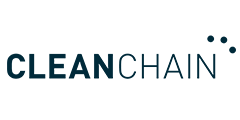Navigating ESG Frameworks with Business Intelligence
Article
By 2025, the amount of data generated each day is expected to reach 463 exabytes globally.
An exabyte is 1,000 bytes to the sixth power (1,000,000,000,000,000,000 bytes). To give you an idea of the scale, all the words ever spoken by humans would fit into just 5 exabytes. Perhaps in more concrete terms, 463 exabytes is the equivalent of 212,765,957 DVDs’ worth of data being generated per day.
Businesses are searching for a single source of truth
Google, Facebook, Microsoft and Amazon store at least 1,200 petabytes of information already, and these are the software powerhouses that businesses rely on today for sourcing, storing and managing these vast quantities of data. With the expected increase in data generation, companies will seek data from multiple sources across the business and value chain, and each territory and department will have its own set of specific metrics and data points that need consolidating into a single source of truth for the businesses to take action. Without this data consolidation for ESG (Environmental, Social and Governance), there won’t be any insights, and businesses won’t be able to evaluate their ESG impacts and performance.
Effectively managing all your environmental reports and frameworks
Along with the data increase, standards, policies and regulations are all increasing at a rapid pace and on a global scale to drive down emissions and create a more sustainable environment. This is having a ripple effect when it comes to reporting and the types of metrics that businesses request internally and that regulators and stakeholders request externally.
Leveraging a technology solution such as CleanChain Business Intelligence enables companies to integrate all their ESG data into one web application. This smart platform automatically creates data models that are customized to your operations and reporting requirements, without the need for excessive IT support.
The advantages of harnessing Business Intelligence include:
- Big cost and time savings by eliminating unnecessary manual tasks, avoiding human error and making use of existing templates and tools
- Fully customized to your business with configurable reports and standardized metrics that can be viewed in multiple formats
- Accountability where data anomalies can be identified and tracked through to resolution
- Automated and streamlined data collection with cleansing capabilities providing accuracy
- Up-to-date reporting and risk management with reliable data, supporting documentation, analytics and audit trails located within a single gated system where access permissions can by defined
- Organization-wide engagement through the use of a single platform to track workflows, manage team collaboration and see the meaningful impact across the business
- Security—your business will not only be ISO-compliant, but you can also set permissions so that only relevant data is shared with users that are specified
Navigate ESG with intelligence
ESG has been coined by many as the latest fad for investors and business stakeholders. Whether you this or not, the trend certainly isn’t showing any signs of slowing down. Actually, it has accelerated with the Sustainable Development Goals (SDGs) published in 2015 by the United Nations and more recently by the European Green Deal. In a bid to make the EU the first climate-neutral continent by 2050, the European Commission adopted a set of proposals to make the EU’s climate, energy, transportion and taxation policies align to reduce net greenhouse gas emissions by at least 55%, compared to 1990 levels, by 2030. At the core of best ESG practices, goals and policies are proactive measures to create a more environmentally friendly and sustainable place, something every brand should aspire to.
When you begin drilling down into each of the ESG pillars and how they might translate into trackable metrics, reports and frameworks, nothing points to why ESG should become the latest buzzword. In fact, the origins of ESG can be tracked back to 18th Century—so it’s not a new concept at all. But the current emphasis on ESG is a fundamental shift in the way that business operates worldwide. The brands, businesses and value chains that are taking ESG seriously—by creating environmental goals and brand policies and adopting ESG platforms—are quickly gaining a competitive edge by attracting a new sustainability-conscious customer base while acquiring new investor and partnership interest. An ESG platform is one of the most intelligent ways to navigate the ever-increasing environmental data requirements and an easy way to showcase your commitment to ESG business practices that will make a positive impact.
Learn how to structure your ESG reports in a matter of minutes with Business Intelligence.





